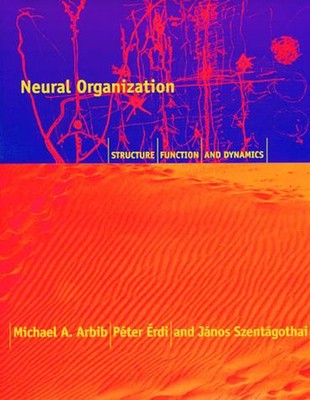
- We will send in 10–14 business days.
- Author: Michael A Arbib
- Publisher: MIT Press
- ISBN-10: 0262526417
- ISBN-13: 9780262526418
- Format: 21.3 x 27.9 x 2.2 cm, softcover
- Language: English
- SAVE -10% with code: EXTRA
Reviews
Description
In Neural Organization, Arbib, Ãrdi, and Szentágothai integrate structural, functional, and dynamical approaches to the interaction of brain models and neurobiologcal experiments.In Neural Organization, Arbib, Ãrdi, and Szentágothai integrate structural, functional, and dynamical approaches to the interaction of brain models and neurobiologcal experiments. Both structure-based bottom-up and function- based top-down models offer coherent concepts by which to evaluate the experimental data. The goal of this book is to point out the advantages of a multidisciplinary, multistrategied approach to the brain. Part I of Neural Organization provides a detailed introduction to each of the three areas of structure, function, and dynamics. Structure refers to the anatomical aspects of the brain and the relations between different brain regions. Function refers to skills and behaviors, which are explained by means of functional schemas and biologically based neural networks. Dynamics refers to the use of a mathematical framework to analyze the temporal change of neural activities and synaptic connectivities that underlie brain development and plasticity--in terms of both detailed single-cell models and large-scale network models. In part II, the authors show how their systematic approach can be used to analyze specific parts of the nervous system--the olfactory system, hippocampus, thalamus, cerebral cortex, cerebellum, and basal ganglia--as well as to integrate data from the study of brain regions, functional models, and the dynamics of neural networks. In conclusion, they offer a plan for the use of their methods in the development of cognitive neuroscience.
EXTRA 10 % discount with code: EXTRA
The promotion ends in 19d.17:11:08
The discount code is valid when purchasing from 10 €. Discounts do not stack.
- Author: Michael A Arbib
- Publisher: MIT Press
- ISBN-10: 0262526417
- ISBN-13: 9780262526418
- Format: 21.3 x 27.9 x 2.2 cm, softcover
- Language: English English
In Neural Organization, Arbib, Ãrdi, and Szentágothai integrate structural, functional, and dynamical approaches to the interaction of brain models and neurobiologcal experiments. Both structure-based bottom-up and function- based top-down models offer coherent concepts by which to evaluate the experimental data. The goal of this book is to point out the advantages of a multidisciplinary, multistrategied approach to the brain. Part I of Neural Organization provides a detailed introduction to each of the three areas of structure, function, and dynamics. Structure refers to the anatomical aspects of the brain and the relations between different brain regions. Function refers to skills and behaviors, which are explained by means of functional schemas and biologically based neural networks. Dynamics refers to the use of a mathematical framework to analyze the temporal change of neural activities and synaptic connectivities that underlie brain development and plasticity--in terms of both detailed single-cell models and large-scale network models. In part II, the authors show how their systematic approach can be used to analyze specific parts of the nervous system--the olfactory system, hippocampus, thalamus, cerebral cortex, cerebellum, and basal ganglia--as well as to integrate data from the study of brain regions, functional models, and the dynamics of neural networks. In conclusion, they offer a plan for the use of their methods in the development of cognitive neuroscience.


Reviews